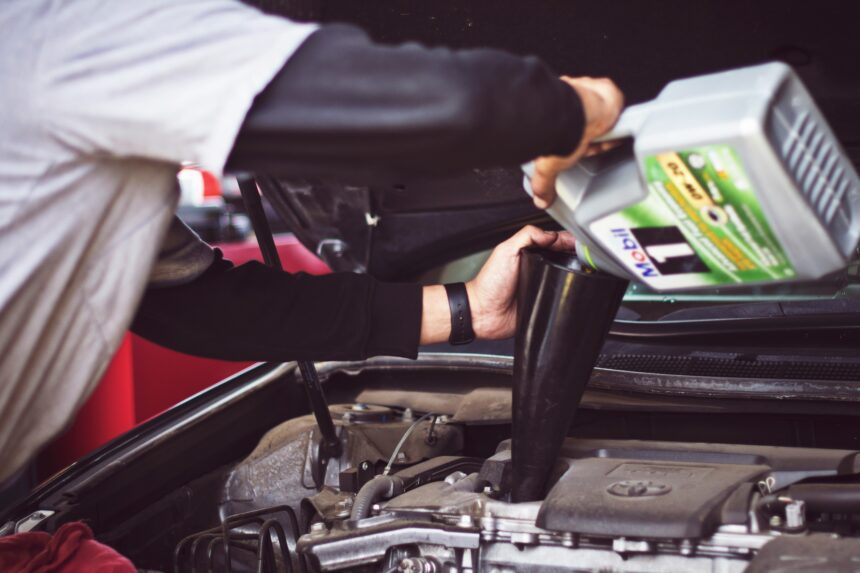Introduction
Owning a car is a significant investment, and just like any valuable asset, it requires regular care and maintenance to perform at its best. A well-maintained vehicle is not only a joy to drive but also ensures safety, reliability, and longevity. Regular upkeep prevents unexpected breakdowns, enhances fuel efficiency, and reduces long-term repair costs.
Whether you’re a seasoned driver or a first-time car owner, understanding essential maintenance practices is crucial. Neglecting minor issues can lead to major mechanical failures that compromise your safety and drain your finances. In this guide, we’ll explore the fundamental steps to maintain your vehicle, covering everything from engine care and tire maintenance to seasonal preparations and emergency readiness.
The Importance of Regular Vehicle Maintenance
Many people view car maintenance as an optional task, only addressing issues when they arise. However, proactive maintenance plays a key role in preventing costly repairs and ensuring road safety. Neglecting your car’s health can result in severe consequences, including brake failure, engine malfunctions, and tire blowouts—all of which can put you and others in danger.
Regular servicing and inspections not only keep your vehicle in top shape but also enhance fuel economy and driving comfort. By staying on top of routine maintenance, you extend the lifespan of your car and maintain its resale value. Let’s explore the critical aspects of vehicle care and how they contribute to your car’s longevity.
Regular Engine Maintenance: Keeping Your Car’s Heart Healthy
The engine is the powerhouse of your vehicle, and maintaining it properly ensures smooth performance and reliability. A neglected engine can lead to overheating, poor fuel efficiency, and costly repairs.
1. Checking and Changing the Oil
Engine oil lubricates moving parts, reduces friction, and prevents overheating. Without regular oil changes, sludge and contaminants build up, leading to engine wear and damage.
- How often should you check the oil? Inspect oil levels at least once a month using the dipstick.
- When should you change the oil? Follow your owner’s manual, but generally, oil should be changed every 3,000 to 5,000 miles for conventional oil and 7,500 to 10,000 miles for synthetic oil.
- Use high-quality oil: Opting for premium oil enhances engine performance and extends its life.
2. Replacing Air and Fuel Filters
Filters play a crucial role in preventing dirt and debris from entering the engine. A clogged filter can reduce fuel efficiency and affect engine power.
- Air filters should be replaced every 12,000 to 15,000 miles or sooner if you drive in dusty environments.
- Fuel filters should be changed as per manufacturer recommendations, usually every 20,000 to 40,000 miles.
Tire Care and Maintenance: Enhancing Safety and Efficiency
Your tires are the only point of contact between your vehicle and the road. Proper tire maintenance ensures better handling, fuel efficiency, and safety.
1. Checking Tire Pressure
Incorrect tire pressure affects handling, braking, and fuel economy.
- How often should you check tire pressure? At least once a month and before long trips.
- What is the right tire pressure? Refer to your vehicle’s manual or the sticker inside the driver’s door for the recommended PSI.
2. Rotating and Balancing Tires
Tires wear unevenly due to weight distribution and road conditions.
- Tire rotation should be done every 5,000 to 7,500 miles to ensure even wear.
- Balancing prevents vibrations and extends the life of your tires.
Proper tire care reduces the risk of blowouts and improves fuel efficiency.
Brake System Maintenance: Ensuring Safe Stopping Power
Brakes are one of the most critical safety components in your car. Worn-out brakes can cause accidents, making it essential to monitor their condition.
1. Recognizing Brake Wear Signs
- Squeaking or grinding noises while braking.
- Vibrations or pulsations in the brake pedal.
- Increased stopping distance or delayed braking response.
2. Replacing Brake Pads and Fluid
- Brake pads should be replaced before they wear down completely to prevent rotor damage. Most need replacement every 25,000 to 50,000 miles, depending on driving habits.
- Brake fluid absorbs moisture over time, reducing braking efficiency. It should be replaced every 2 years.
Regular brake maintenance ensures optimal stopping power and prevents costly repairs.
Battery Maintenance: Preventing Unexpected Breakdowns
A dead battery can leave you stranded at the worst possible time. Ensuring your battery is in good condition helps avoid inconvenient breakdowns.
1. Cleaning Battery Terminals
Corrosion buildup can interfere with battery connections.
- Clean terminals with a baking soda and water mixture using a wire brush.
2. Checking Battery Charge
- Test the battery voltage periodically using a multimeter.
- Most car batteries last between 3 to 5 years, so consider replacement if it’s nearing the end of its lifespan.
Fluids and Coolants: Keeping Your Car Running Smoothly
Your car relies on multiple fluids to function efficiently.
1. Checking Coolant Levels
- Coolant regulates engine temperature and prevents overheating.
- Ensure levels are adequate and flush the system every 2 to 3 years.
2. Maintaining Transmission Fluid
- Transmission fluid lubricates the gearbox for smooth shifting.
- Check and replace it every 30,000 to 60,000 miles as needed.
Exterior and Interior Care: Protecting Your Investment
1. Washing and Waxing Regularly
- Wash your car every two weeks to prevent dirt and salt buildup.
- Apply wax every 3-6 months to protect the paint from sun damage.
2. Interior Cleaning and Protection
- Vacuum seats and carpets regularly.
- Use UV protectant on dashboards and leather seats to prevent cracking.
Emergency Kit and Routine Safety Checks
Every driver should keep an emergency kit in their vehicle.
Must-Have Emergency Items
- Spare tire and jack
- Jumper cables
- First aid kit
- Flashlight and extra batteries
Routine Safety Checks
- Inspect seat belts, airbags, and windshield wipers regularly.
- Ensure lights and signals function properly.
The Role of Professional Servicing
While basic maintenance can be done at home, some repairs require expert handling.
- DIY Maintenance: Oil changes, tire pressure checks, and air filter replacements.
- Professional Maintenance: Brake replacements, transmission servicing, and suspension repairs.
Finding a Trustworthy Mechanic
- Look for certified professionals with positive customer reviews.
- Ask for transparent pricing and explanations of repairs.
Conclusion
Proper car maintenance is the key to longevity, safety, and performance. By following a consistent maintenance schedule—covering engine care, tire upkeep, brake inspections, and seasonal preparations—you ensure smooth and cost-effective driving. Regular check-ups save money in the long run and provide peace of mind on the road.
A well-maintained car is a reliable car. Take care of your vehicle, and it will take care of you.
Frequently Asked Questions (FAQs)
1. How often should I change my car’s oil?
Most manufacturers recommend every 3,000 to 5,000 miles, but check your owner’s manual for specifics.
2. How do I know if my brakes need replacement?
Signs include squeaking, vibrations, and increased stopping distance.
3. What’s the best way to improve fuel efficiency?
Maintain proper tire pressure, drive smoothly, and use recommended fuel.
4. How often should I rotate my tires?
Every 5,000 to 7,500 miles to ensure even wear.
5. Why is regular car maintenance important?
It prevents costly repairs, improves safety, enhances fuel efficiency, and extends your vehicle’s lifespan.






